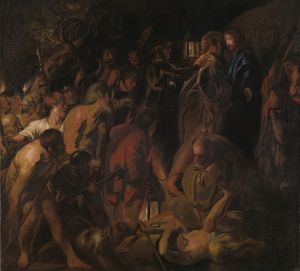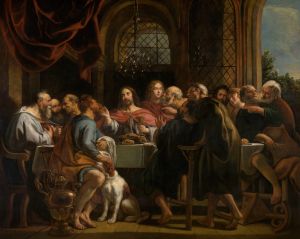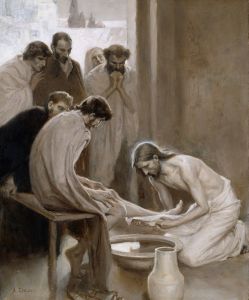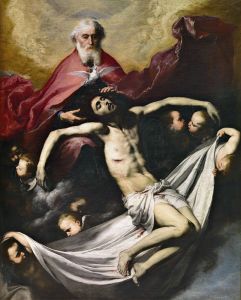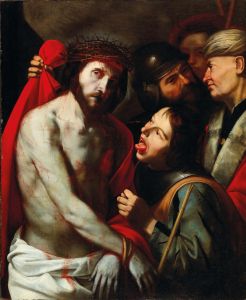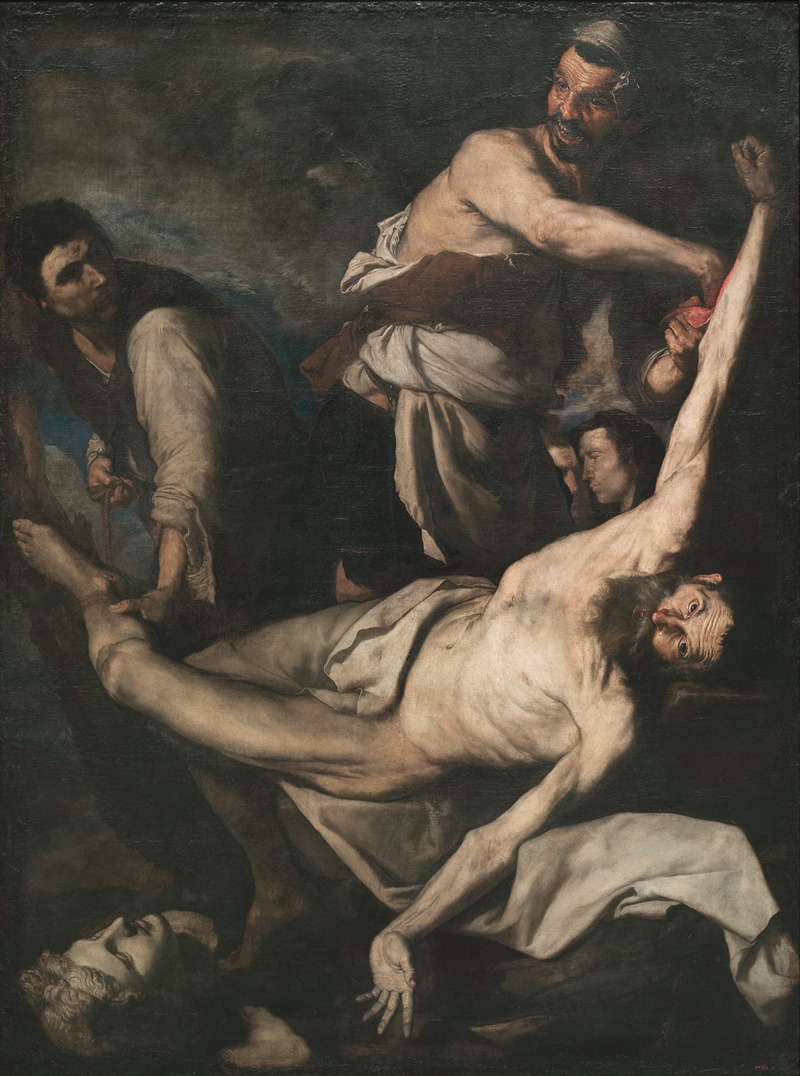
Martyrdom of Saint Bartholomew
A hand-painted replica of Jusepe de Ribera’s masterpiece Martyrdom of Saint Bartholomew, meticulously crafted by professional artists to capture the true essence of the original. Each piece is created with museum-quality canvas and rare mineral pigments, carefully painted by experienced artists with delicate brushstrokes and rich, layered colors to perfectly recreate the texture of the original artwork. Unlike machine-printed reproductions, this hand-painted version brings the painting to life, infused with the artist’s emotions and skill in every stroke. Whether for personal collection or home decoration, it instantly elevates the artistic atmosphere of any space.
The Martyrdom of Saint Bartholomew is a painting by the Spanish Baroque artist Jusepe de Ribera, also known as José de Ribera. Created in 1644, this work is one of Ribera's many depictions of religious and martyrdom themes, which were central to his oeuvre. Ribera, who spent most of his career in Naples, was known for his dramatic use of chiaroscuro and his unflinching realism, characteristics that are evident in this painting.
The artwork portrays the martyrdom of Saint Bartholomew, one of the twelve apostles of Jesus Christ. According to Christian tradition, Saint Bartholomew was flayed alive for his faith, and Ribera captures the moment with intense emotional and physical realism. The painting depicts the saint bound and surrounded by his tormentors, with tools of torture visible, emphasizing the brutality of the scene. Ribera's use of light and shadow highlights the physicality of the figures and the tension of the moment, drawing the viewer's attention to the suffering of the saint.
The painting is notable for its psychological depth and its focus on the human body. Ribera's detailed rendering of anatomy and his ability to convey the textures of skin and muscle reflect his deep study of the human form. The expressions of the figures, from the calm resignation of Saint Bartholomew to the grim determination of his executioners, add a layer of emotional complexity to the work.
The Martyrdom of Saint Bartholomew is housed in the Museo del Prado in Madrid, Spain. The museum, which holds one of the most significant collections of European art, acquired the painting as part of its extensive collection of works by Ribera. The painting is considered a prime example of Ribera's mature style and his ability to combine technical skill with a profound exploration of human suffering and faith.
Ribera's work was heavily influenced by the Caravaggisti, followers of the Italian painter Caravaggio, whose dramatic use of light and shadow and focus on realism had a significant impact on Baroque art. Ribera adapted these techniques to his own style, creating works that are both visually striking and emotionally powerful.
The Martyrdom of Saint Bartholomew remains an important example of Baroque religious art, reflecting the Counter-Reformation emphasis on the suffering of saints as a means of inspiring devotion and piety among viewers. Ribera's unflinching portrayal of martyrdom continues to resonate as a testament to the artist's skill and his ability to convey the complexities of faith and human endurance.





